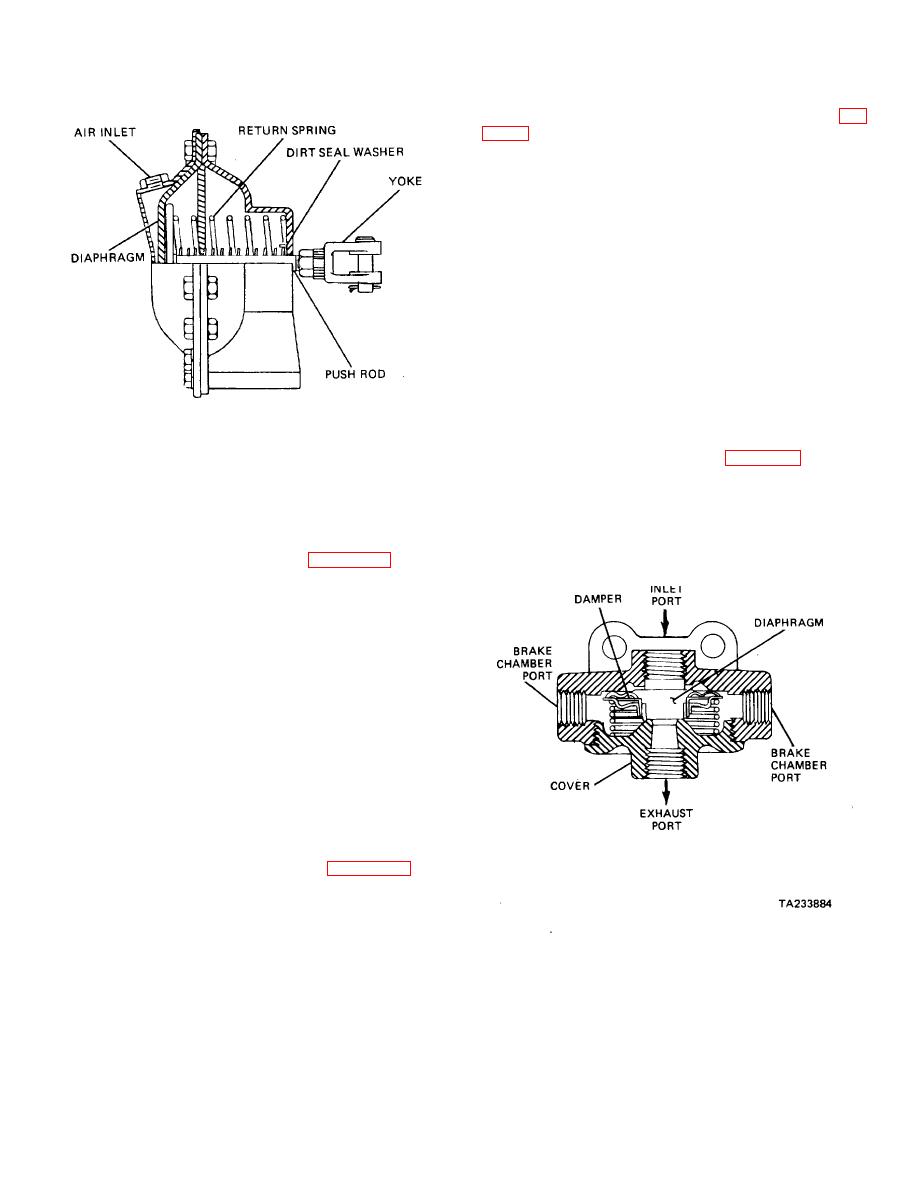
| Tweet |

Custom Search
|
|

|
||
 TM 9-8000
through the port to the cavity above the diaphragm (fig.
subject to quick changes in air pressure, causing the
valve to react quickly. Operation of the valve is similar to
that of the quick release valve. Air pressure from the
brake valve forces the diaphragm down to close the
exhaust port beneath the diaphragm outer edge. Further
air pressure depresses the center of the diaphragm,
opening the supply valve, and compressed air flows into
the cavity below the diaphragm and into the brake
chambers. As soon as the air pressure above the
diaphragm is equalized by the brake chamber air
pressure, the diaphragm is raised to the holding position,
closing the supply valve and keeping the exhaust port
closed. When the air pressure above the diaphragm is
reduced by the operator releasing the brake pedal, the
brake chamber air pressure lifts the diaphragm, opening
the exhaust port and exhausting the compressed air
Figure 34-36. Brake Chamber.
pressure from the brake chamber.
h. Slack Adjuster. Slack adjusters (fig. 34-39) function
valve is provided to reduce the time required to release
the brakes by hastening the exhaust of air under
as adjustable levers and provide a means of adjusting
pressure from the brake chambers. The valve contains a
the brakes to compensate for wear of linings. During
spring-loaded diaphragm arranged so as to permit
brake operation, the entire slack adjuster rotates with the
airflow through the valve in only one direction. In the
brake camshaft, which is connected to the slack adjuster
brake application position, air under pressure from the
through the splined central hole. For brake adjustment,
brake valve enters the inlet port (fig. 34-37). The
the worm moves the gear, changing the position of the
diaphragm Is forced downward and closes the exhaust
lever arm with respect to the camshaft.
port. The air under pressure then deflects the outer
edges of the diaphragm downward and enters the brake
chambers to apply the brakes. As soon as the air
pressure in the chambers and below the diaphragm
equals the air pressure above the diaphragm, the
diaphragm spring forces the outer edge of the diaphragm
up against the valve body, closing off the brake
chambers from the Inlet port. In this holding position, the
diaphragm continues to keep the exhaust valve closed. If
the pressure above the diaphragm is reduced or
completely released by the driver releasing the brake
pedal partially or completely, the air pressure below the
diaphragm causes the diaphragm to be raised to open
the exhaust port and release the brake chamber air
pressure.
g. Relay Valve. The relay valve (fig. 34-38) is
controlled by the brake valve, and speeds up application
and release of the rear wheel brakes for long wheel-base
vehicles. It reacts quickly to slight changes in air
pressure from the brake valve. When the brake pedal is
operated, air under pressure from the brake valve is
Figure 34-37. Quick Release Valve.
delivered
34-38
|
||
 |
||